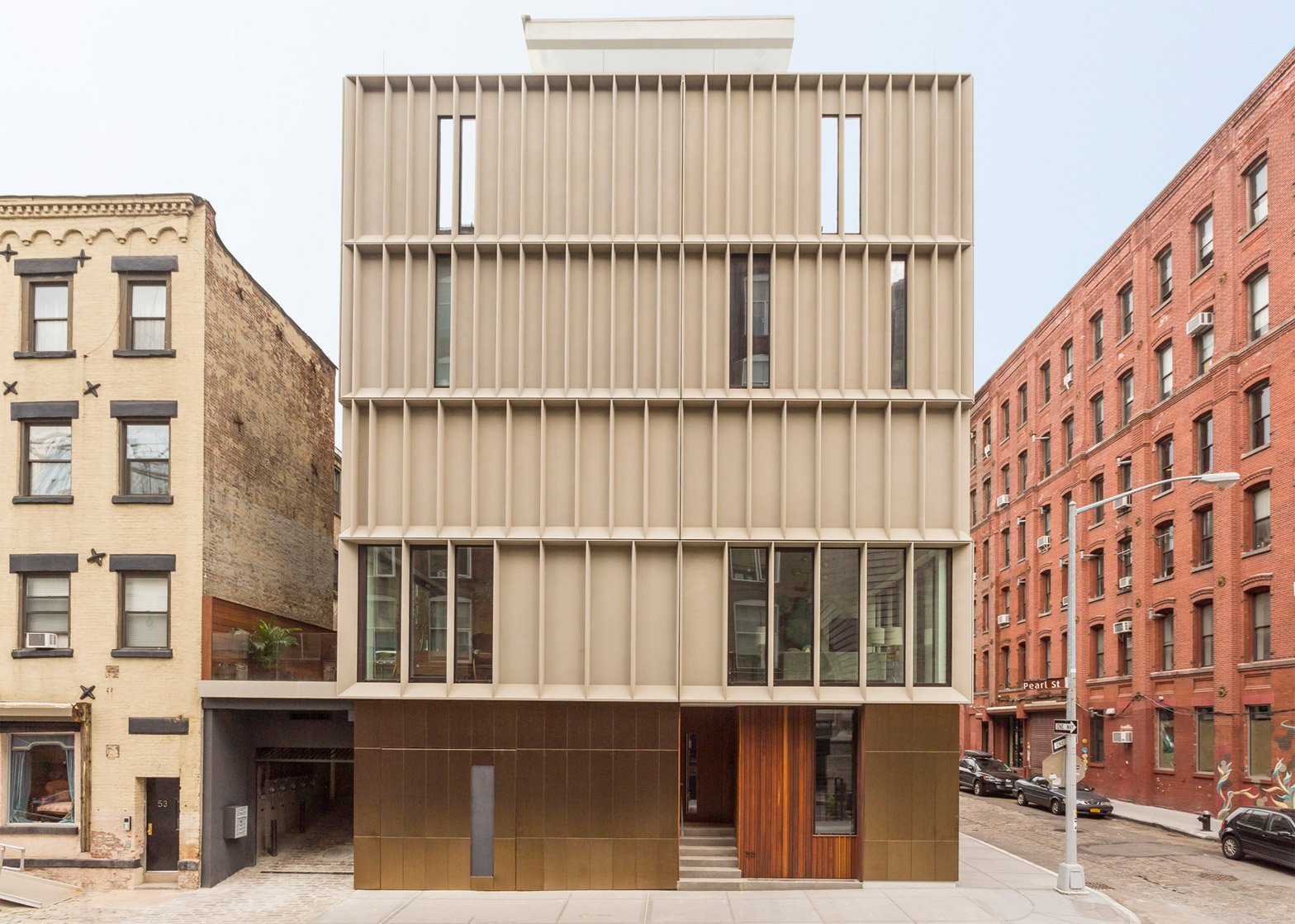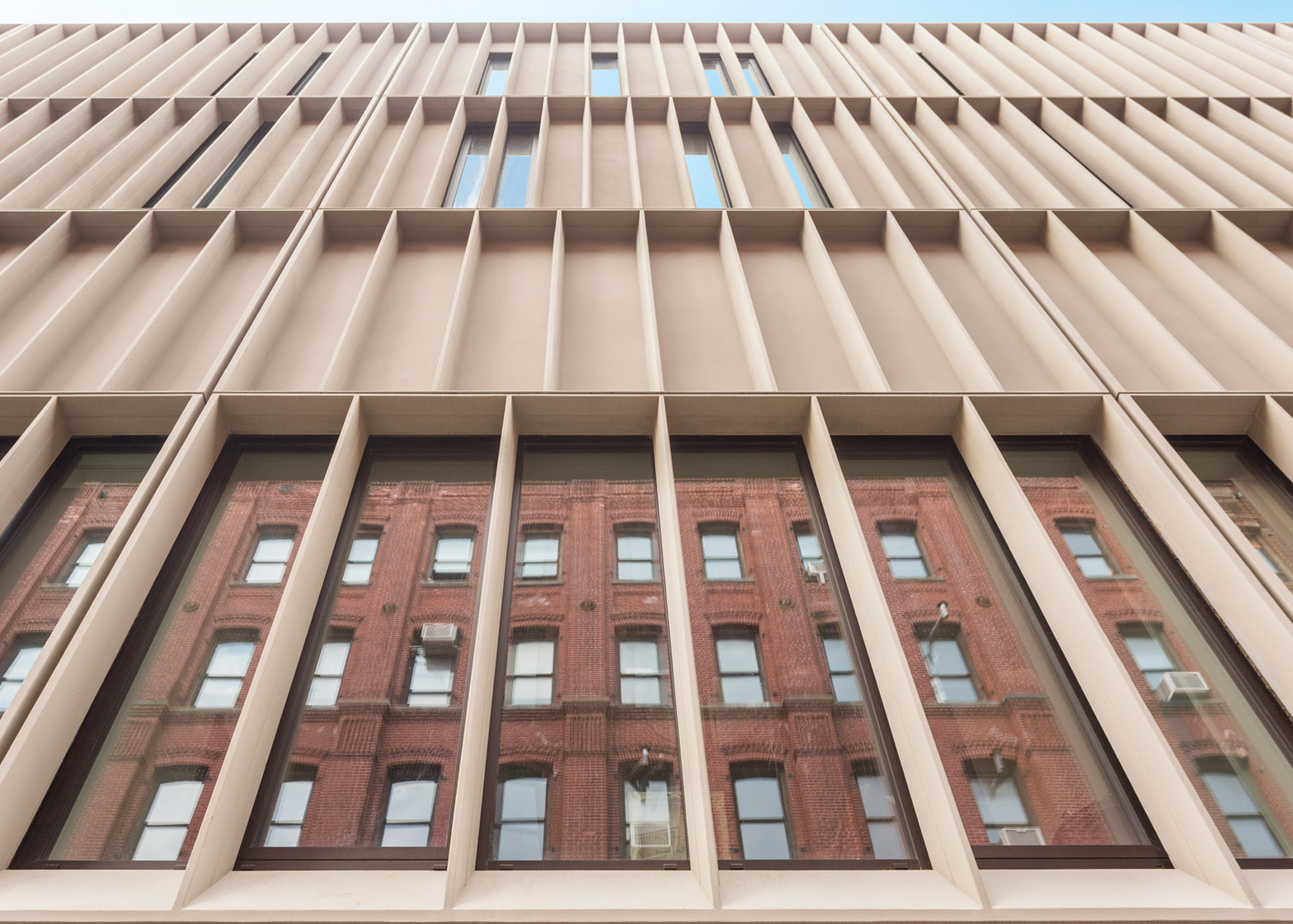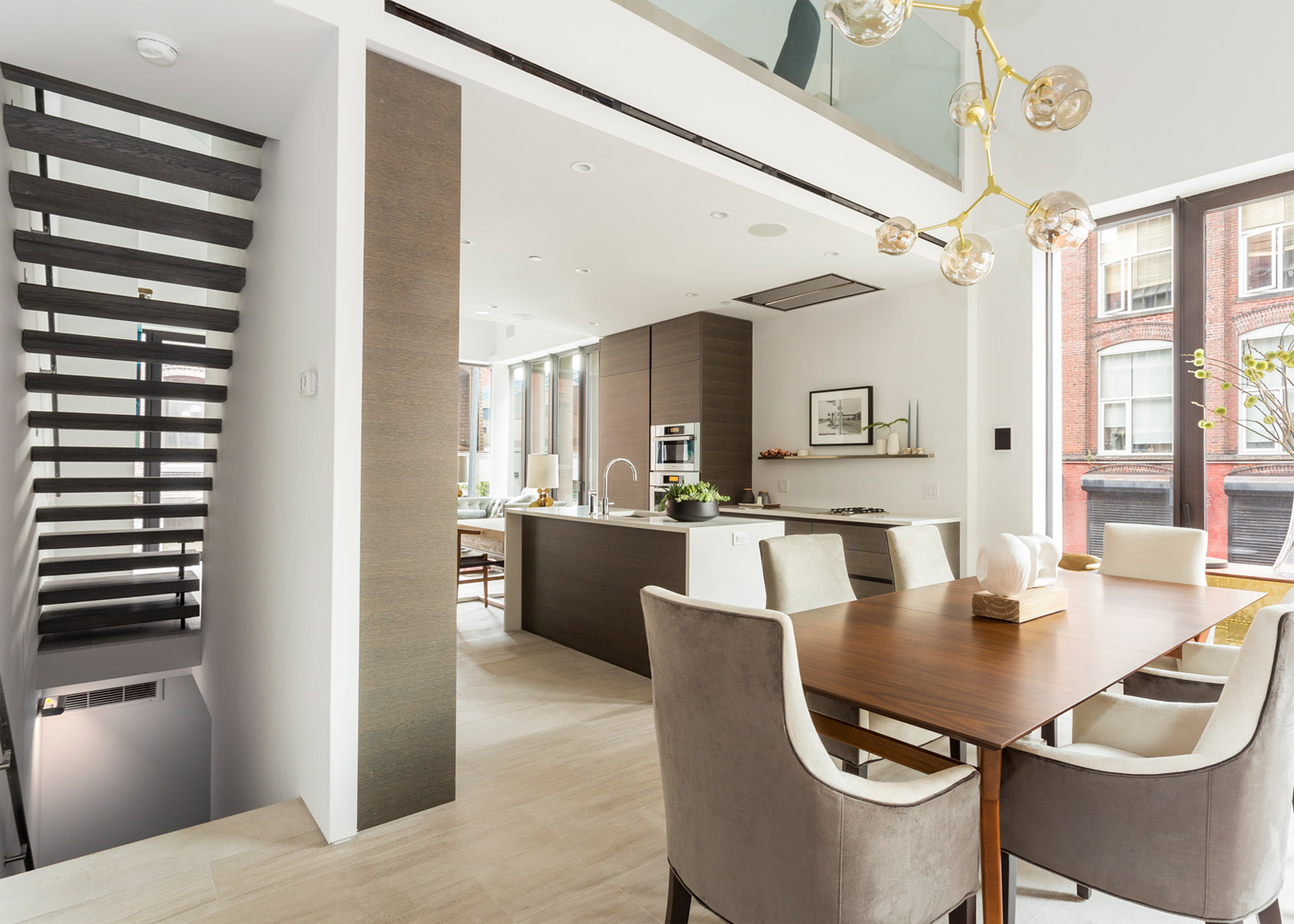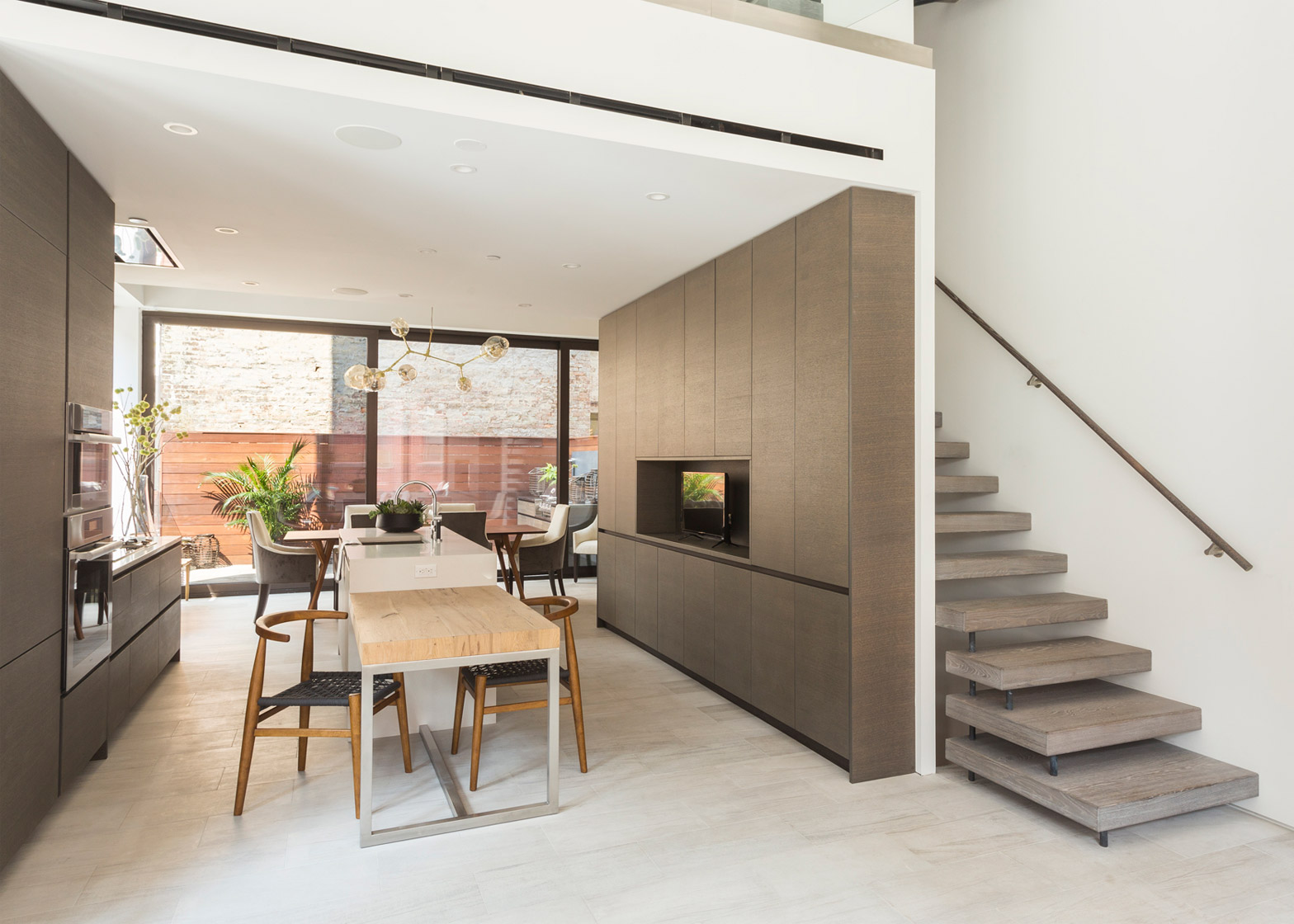New York firm Alloy has completed a row of skinny houses in Dumbo, with a concrete, wood and steel facade that is meant to reference the Brooklyn neighbourhood's industrial character (+ slideshow).
The DUMBO Townhouses project involved the demolition of a single-storey warehouse and the construction of a new building divided into five skinny single-family homes.
Each unit measures 18 feet in width (5.4 metres) and encompasses 3,500 square feet (325 square metres).
The development was built on a 4,600-square-foot (427-square-metre) plot in Dumbo, a Brooklyn enclave situated along the East River, which has undergone significant regeneration in recent years.
The building is located across from a new public park in the historic industrial district, which was once a centre for manufacturing.
"The team was sensitive to the industrial warehouse context, which includes many of the city's first reinforced concrete buildings," said Alloy, which acted as architect, contractor, developer and broker for the residential development.
The building's facade is clad in a combination of materials. The lower portion is sheathed in ipe wood and coated stainless-steel panels, "which soften the entry experience," said the firm.
The upper portion comprises panels made of high-performance fibre-reinforced concrete.
"The building envelope is clad in a series of tensile Ductal concrete panels, a contemporary concrete technology, which compliments the tone and texture of the neighboring buildings and allows the concrete to be cast to delicate proportions," said the architects.
The panels were arranged to create a series of fins that "match the cadence of the fenestration of neighbouring buildings," the firm added. Beyond aesthetics, the fins provide solar shading and privacy while permitting light to enter the dwellings.
Inside, each home contains four bedrooms, three bathrooms, parking and outdoor space.
The first level contains an entry vestibule, guest suite, storage space and parking. The second level, called the "parlour floor," features a kitchen, dining area and living room, all with 20-foot-high (six metres) ceilings. Full-storey windows and sliding glass doors enable daylight to fill the rooms.
A mezzanine level contains a casual living room "that is removed from the formality of the parlour floor," said the firm.
A lightwell extends from the second storey up through the home's third and fourth levels, where the bedrooms are situated. A fifth-storey penthouse space opens onto a roof terrace that offers views of the Manhattan skyline across the river.
The firm said it decided to build the project in Dumbo because of its growing population of families. The district, whose name was originally an acronym for down under the Manhattan bridge overpass, began to lose its industrial function in the 1970s.
Artists and New Yorkers looking for affordable studios and loft-style apartments started moving in to the area, and it went through a rapid period of gentrification in the 1990s. Still home to a number of leading galleries, it has more recently become a hub for tech startups.
Alloy chose to build a townhouse development instead of a condominium tower for economic reasons.
"This critical decision lowered construction costs to under $400 (£264) per square foot by reducing the complexity of excavation and construction next to historic buildings and created 100 per cent efficient townhouses for sale, rather than condominiums with un-saleable corridors and common areas," said the firm.
All five of the townhouses were sold by 2013 – two years before the project was completed.
Established in 2006, Alloy is one of several New York firms that acts as both developer, architect and contractor.
Photography is by Cameron Blaylock.





